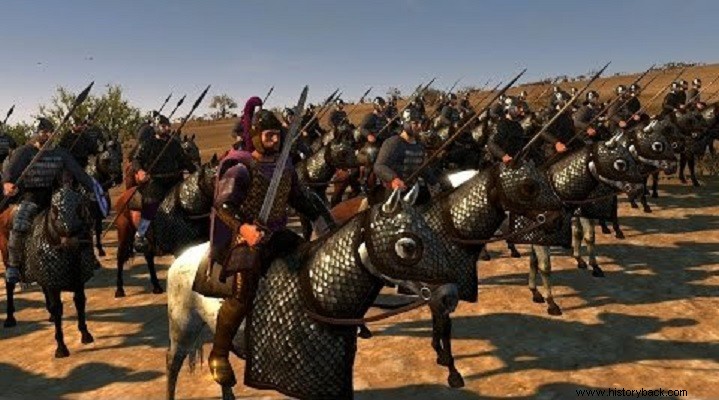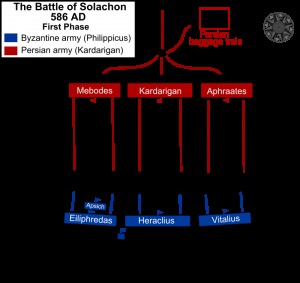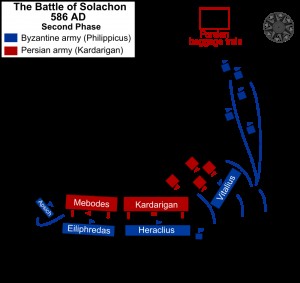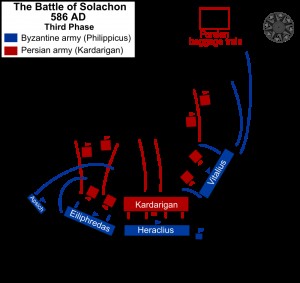
In 586 AD the Byzantine Empire and that of the Sassanid Persians were again at war. In 582 AD general Maurice had ascended the throne of Constantinople. Oromisdas IV did not reign in Ctesiphon. The war continued in different phases with the Persians having the initiative on the border of Mesopotamia. Mauritius, in 584 AD. appointed Philippicus general in the region.
The Byzantine general immediately took action and raided the Persian lands around Nissivi in AD 584 and 585. The Persian general Kardarigan he reacted accordingly, but to no avail. In the spring of 586 AD the Persians proposed peace, but demanded the payment of a servitude tax from Mauritius, a demand which was not accepted.
And Philippicus, as a result, advanced with his army to meet the enemy, to show how submissive the Empire was. Philippicus moved south of Amida (present-day Diyarbakir), crossed the Zergan River and entered Syria and camped in the Solakhon plain, south of Daras.
Philippicus' move was deeply thought out as he camped in a location that not only controlled the routes of the area, but also controlled the water... The Persians to approach had to cross the arid plain.
The Persian general, in order to deal with the problem, moved with him with many saddlebags loaded with sacks of water. He was so sure of his imminent victory that he also carried chains with him to chain the Byzantine prisoners he would capture. strong> But his movements were detected by Arab allies of the Byzantines.
The opponents
Philippicus divided his forces into three bodies His left horn, under Elifreds was drawn up on the hill of Izala, together with a body of Hunnic light cavalry under Apsich. The center was commanded by general Heraclius, father of the later emperor, and the right by brigadier-general Vitalios. Phillipicus himself was put in charge of a small elite division of cavalry, as a general reserve.
The sources do not mention the presence of infantry, but neither do the numerical strength of the opponents. It seems that the entire force of Philippicus consisted of horsemen.
Cardarigan for his part also ordered the forces into three divisions. In the center he lined up himself with his best men. General Mevodis and his men lined up on the right corner and Afraatis on the left. The Persian camp, with its precious stores of water, had been established behind the force of Aphraates.
Clash on the Dry Plain
The Persians then moved against the Byzantines. When they got within shooting distance they started to fire arrows. Then the Byzantine right wing, under Vitalius, rushed forward and soon routed the Persian corps opposite it. But Vitalius' horsemen lost their cohesion while pursuing the enemy, creating a risk of overflanking the Byzantine center.
However, with the intervention of Philippicus, the victorious force of Vitalios was regrouped at a time when the powerful Persian center threatened to split the opposing Byzantines. According to the sources, the display of Philippicus' helmet was enough to regroup his horsemen. To counter the Persian pressure in the center, Philippicus ordered his horsemen to dismount and form a phalanx.
The infantry Byzantine horsemen, using their lances as spears, intercepted the Persians. At the same time, Vitalios' men were attacking them in the flank. But the Byzantine left also managed to prevail against the Persians on the other side, after a hyper-waxing maneuver by the Huns.
Thus soon the Persian center was surrounded and annihilated. The Persians put it to work led by their arrogant general. Thousands of Persians were killed and many more died of thirst afterwards as the Byzantines overran the Persian camp. It was a great victory, similar to that of Marathon...

The original base of the battle.

Vitalius defeats the Persian left.

The Persian center is surrounded.
